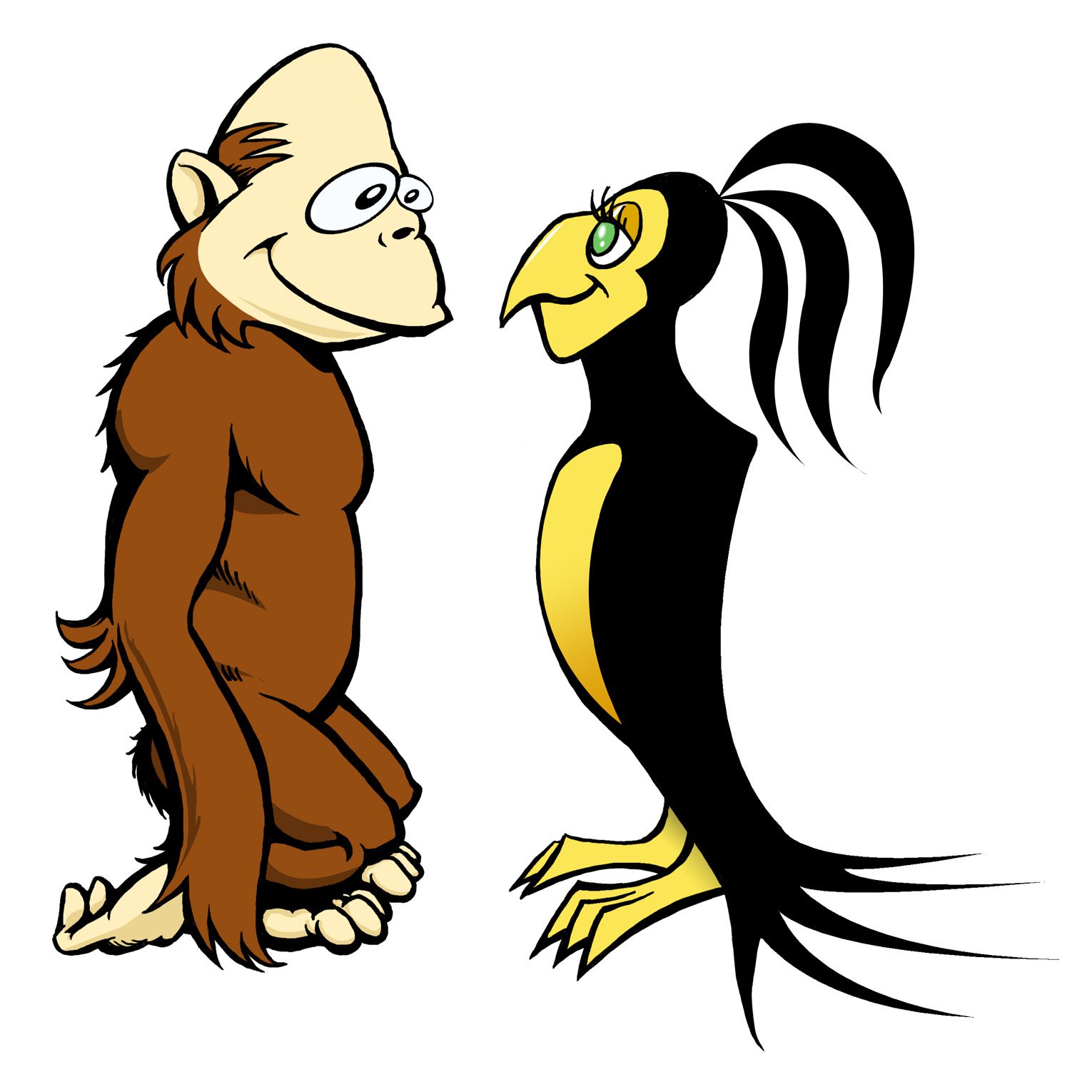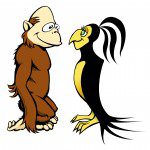Part I
Bill Cucinotta told us about the Philadelphia Alternative Comic Convention a while back, and Tina, Bill and I all planned on attending to see what the other kids are up to as Tina put it in her entry on Tuesday. I decided that I didn’t want to go empty handed so I decided to turn the first chapter of Monkey & Bird into a printed mini-comic. It would be small enough so that I could do it inexpensively and easily. I knew it would look awful in black and white so I wanted to do it in full color. I explored my options and looked into pricing.
I got quoted a price that was more than fair so now it was time for the hard part – the layout.
We had 24 pages worth of story in chapter 1. Throw a cover on it, and that makes it 28 pages which I could have stuck with, but Dan Love, Master of the Layout Arts, gave me the notion of making two 16-page signatures so that they could be folded down, one placed inside the other, stapled, and finally chopped down for a nice, clean and even little book. I padded the book out a little with a sneak preview of chapter 2, and I wound up with the required 32 pages.
I did the layout in InDesign as I do with the regular cartoon installments that you read at CO2 Comics. I created a high quality PDF from my comic and placed the pages at a reduced size into the 12×18 layout. Originally, I had an idea for doing the mini-comic on a smaller scale possibly at home on an inkjet printer. My thinking was to fit the two-page spreads across a typical 8.5″ x 11″ sheet so I made the individual pages 5.5″ across by 4″ high with a decent white border. Of course, trying to print these out at home would have been an expensive and painful process on an inkjet printer. Being I was offered a price I couldn’t refuse, and Tina and I were going to assemble the books ourselves further lowering the costs, I decided to have the book printed on a Ricoh C-900 which is a toner-based printer. It’s similar to a color laser copier, but it doesn’t have the glass or a scanner so you can’t make copies. It’s a huge color laser printer that prints on a number of different stocks. It prints mainly on 12″x18″ stock which is nice for tabloid prints with a bleed. It handles color nicely, and after trying a test print, it was going to be perfect for my needs.
Obviously, the comic was printed without the Bingo balls. I placed them there so you, dear readers, could see my imposition. Your imposition may vary depending on the size of the book, but I wouldn’t want to go with anything more than 32 pages as far as stapling this baby. I know that the big comic companies would churn out saddle-stitched 80-Page Giants but they would print that stuff on toilet paper. I have a few long boxes filled with yellowing newsprint that can attest to the quality of paper that comic publishers used back in the 1970s and earlier. I went with a 70#, uncoated, text weight stock which is a beautiful paper, and Monkey & Bird looks great on it. Maybe they have lighter paper that will still work with that machine. I’ll have to explore that aspect of the process in future iterations of the mini-comic.
In short order, I had a stack of printed pages that needed to be assembled.
 NEXT WEEK: It’s a folding party! Learn about bone folders! I take the Pepsi Challenge as far as two different brands of staplers are concerned, and learn that they don’t make staples like they used to!
NEXT WEEK: It’s a folding party! Learn about bone folders! I take the Pepsi Challenge as far as two different brands of staplers are concerned, and learn that they don’t make staples like they used to!








Nothing like a fresh box of printed comics.
It will be reprinted in 10 years with a new cover and will go by the title Monkey & Bird Tales.